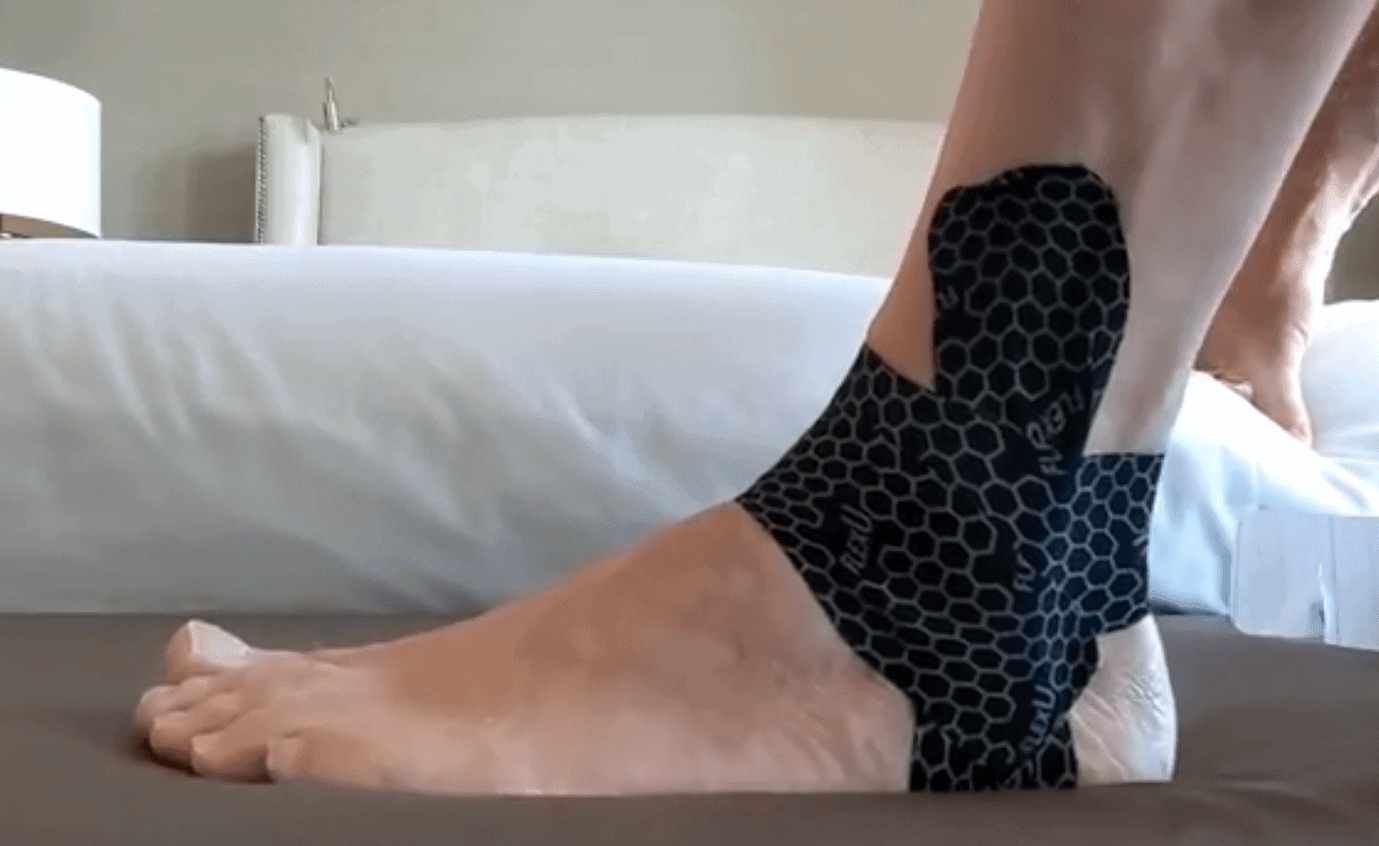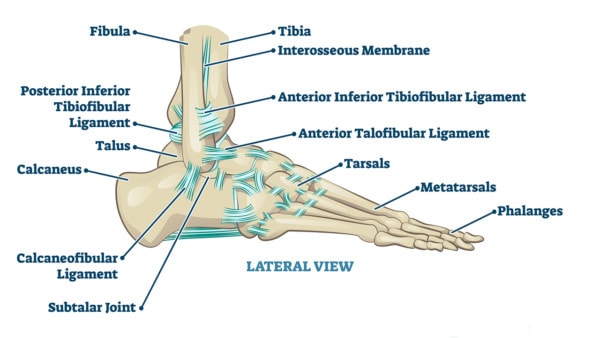4 Simple Steps to Wrap a Sprained Ankle With KT Tape
On this page:
I sprained my ankle and trashed my lateral ligaments many years ago and became dependent on athletic tape to function until I discovered PRP (platelet-rich plasma) injections. I had two treatments one month apart and have been ankle wrap-free until recently.
My joints and ligaments have become beat up from a lifetime of being active and as I’ve aged, my ligaments needed a touch-up. I recently got one.
I’ve started wrapping my ankle again before a hike, body-weight workout, or bike ride as they are healing and tightening down. Once that recovery process is done, I’ll stop taping. Read on to learn about why wrapping can help ankle injury recovery and my go-to technique.
Does Wrapping Your Ankle Help?
Yes, the tape wrapping the ankle serves as a substitute for the damaged ligaments that generally cover and protect the ankle joint (1).

There are two kinds of ankle taping. The first is for when the game needs to continue regardless of acute ankle sprains. It uses the tape as a flexible cast for the joint and is not recommended unless multi-million dollar NFL contracts are on the line. Why? Additional damage to the ankle is possible.
The second kind, and likely the reason you are reading this, is for the weekend warrior who has yet to have loose ankle ligaments fixed and has ankle pain during or after a workout. Here the goal is to provide temporary protection and compression with an elastic bandage like KT tape — also known as Kinesio tape or Kinesiology tape.
How Does KT Tape Work?
Taping the skin to try to replicate the function of ligaments isn’t easy. Most tape doesn’t stretch the way your ligaments do. When you jump up and down, your ligaments stretch to their limit and then stop. That hard stop protects the joint, and their ability to stretch protects the ligament itself.

VectorMine/Shutterstock
The most common ankle ligaments supported by ankle taping are the ones on the outside of the joint (lateral). The posterior and anterior talofibular ligaments travel horizontally and the calcaneofibular ligament travels almost vertically, which is why the tape follows the same pattern as these ligaments highlighted yellow in the image above. Think of these ligaments as pieces of tape on the outside of your ankle that attach the small outside ankle bone (fibula) to the main leg bone (tibia) and foot.
Regular cloth tape doesn’t stretch, so using it just amounts to a tape cast around the joint. On the other hand, KT Tape can be forgiving and stretchy, or tight with only a slight give. Flexible KT tape is also easy to remove from skin, making which makes it convenient for daily use.
Ankle Taping Video, Instructions and Tips
- Get two strips of tape per ankle. You can buy the pre-cut 10-inch strips, as I do, or get a roll and cut the pieces yourself.
- It is VERY important to stretch the tape as you apply it.
- First, apply the vertical strip. Start from the outside of your ankle and apply the tape with your heel tilted outward. Then, pass the tape down under your heel. Bring the tape back up the inside of your ankle and tilt the ankle toward the tape on the inside. Finish by sticking it in place.
- Then apply the horizontal strip. Again, be sure to stretch the tape as you apply it. Apply the tape at the same level of your ankle bone that protrudes on the outside and inside (lateral and medial malleolus), wrapping the tape around as many times as it will go.
__________________________________________________
References
(1) Wilson B, Bialocerkowski A. The Effects of Kinesiotape Applied to the Lateral Aspect of the Ankle: Relevance to Ankle Sprains–A Systematic Review. PLoS One. 2015;10(6):e0124214. Published 2015 Jun 23. doi:10.1371/journal.pone.0124214
If you have questions or comments about this blog post, please email us at [email protected]
NOTE: This blog post provides general information to help the reader better understand regenerative medicine, musculoskeletal health, and related subjects. All content provided in this blog, website, or any linked materials, including text, graphics, images, patient profiles, outcomes, and information, are not intended and should not be considered or used as a substitute for medical advice, diagnosis, or treatment. Please always consult with a professional and certified healthcare provider to discuss if a treatment is right for you.